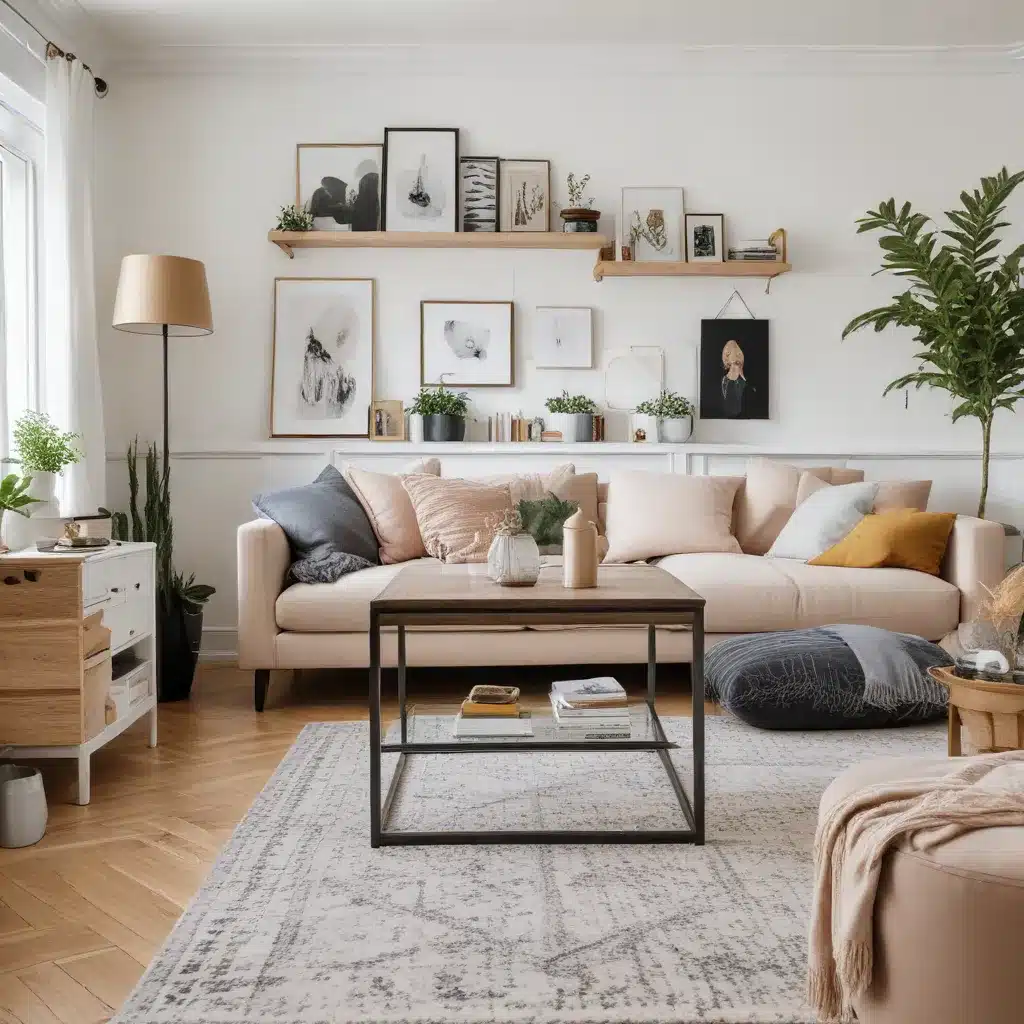
The Importance of Decluttering Your Home
In today’s fast-paced world, our living spaces can quickly become overwhelmed with clutter. From the playroom to the home office, the accumulation of possessions and paperwork can create an environment of chaos and stress. However, as seasoned construction professionals and interior designers, we know that a well-organized, decluttered home can have a profound impact on our mental and physical well-being.
Clutter can negatively affect our focus, productivity, and even our mood. Studies have shown that a cluttered environment can increase feelings of anxiety and depression, making it difficult to relax and enjoy our personal spaces. On the other hand, a decluttered and organized home can promote a sense of calm, clarity, and control – allowing us to truly embrace the comforts of our living spaces.
Step-by-Step Decluttering Strategies
The task of decluttering can seem daunting, but with the right approach, it can be a transformative experience. Here are our top tips for tackling the clutter and creating a stress-free living space:
Identify Your Priorities
Before you start the decluttering process, take a moment to reflect on your goals and priorities. What do you want your home to feel and look like? What example do you want to set for your family? Answering these questions will help you stay focused and motivated throughout the decluttering journey.
Tackle One Area at a Time
Attempting to declutter your entire home at once can be overwhelming. Instead, focus on one room or area at a time, breaking the project down into manageable steps. This will help you maintain momentum and see tangible progress, which can be incredibly motivating.
Employ the “Four-Box” Method
As you begin the decluttering process, use the “four-box” method to sort your items:
1. Keep: Items that you use regularly and truly value.
2. Donate: Gently used items that still have life in them, but no longer serve your needs.
3. Recycle: Items that can be repurposed or recycled responsibly.
4. Discard: Items that are broken, damaged, or no longer usable.
Categorizing your items in this way will help you make informed decisions about what to keep and what to let go.
Assign Zones and Accessibility
Once you’ve sorted your items, it’s time to create designated “zones” within your living space. Group similar items together, considering their frequency of use. Place the most frequently used items in easily accessible locations, while storing less-used items in secondary or overflow areas.
Label and Maintain
Involve your family in the organization process by labeling storage containers and bins. This will encourage everyone to participate in the upkeep of the decluttered space. Regularly review and maintain your organized systems to prevent the reaccumulation of clutter.
Incorporate Sustainable Storage Solutions
When selecting storage containers and organizational tools, look for eco-friendly options that align with your sustainable lifestyle. From recycled plastic bins to natural woven baskets, there are plenty of stylish and environmentally-conscious choices available.
Establish Routines and Habits
Decluttering is not a one-time event – it’s an ongoing process that requires the development of new habits and routines. Dedicate a few minutes each day to tidying up, and encourage your family to do the same. This will help you maintain the order and serenity you’ve worked so hard to create.
Strategies for Specific Spaces
While the overall principles of decluttering remain the same, certain areas of the home may require specialized approaches. Here are some targeted tips for common problem areas:
The Playroom
Playrooms can quickly become a chaotic mess, with toys and games scattered everywhere. To tame the clutter, create designated zones for different types of play, such as a reading nook, a building area, and a space for imaginative play. Utilize storage bins, shelves, and baskets to keep toys and games organized and accessible.
The Home Office
The home office can be a breeding ground for paperwork and electronic clutter. Implement a filing system to keep important documents organized, and explore digital storage solutions to minimize the accumulation of physical files. Regularly purge outdated or unnecessary paperwork to maintain a clear and productive workspace.
The Kitchen
The kitchen is often one of the busiest and most cluttered spaces in the home. Start by clearing out unused or expired food items, then focus on organizing your cookware, utensils, and pantry items. Consider installing additional shelving or using drawer organizers to maximize storage and keep everything in its place.
The Benefits of a Decluttered Home
By implementing these decluttering strategies, you’ll not only enjoy a more visually appealing and organized living space, but you’ll also experience a range of benefits that can improve your overall well-being:
- Increased Productivity: A decluttered environment can help you focus and stay on task, allowing you to be more productive in your work and daily activities.
- Reduced Stress and Anxiety: A tidy, organized home can promote a sense of calm and control, reducing feelings of stress and anxiety.
- Improved Mental Clarity: When your living space is free from clutter, your mind can feel more clear and focused, leading to better decision-making and a greater sense of control.
- Enhanced Relaxation: A decluttered home can create a peaceful, soothing atmosphere, making it easier to unwind and recharge after a long day.
- Healthier Habits: Decluttering can inspire you to develop more sustainable and eco-friendly habits, such as recycling, donating, and mindful consumption.
Remember, the journey to a decluttered and organized home is not a one-time event, but an ongoing process. By embracing these strategies and making decluttering a regular part of your lifestyle, you’ll create a living space that truly reflects your values and supports your well-being.
For more information on home renovation, building services, sustainable practices, and interior design, be sure to explore the resources available on Local Builder London.


